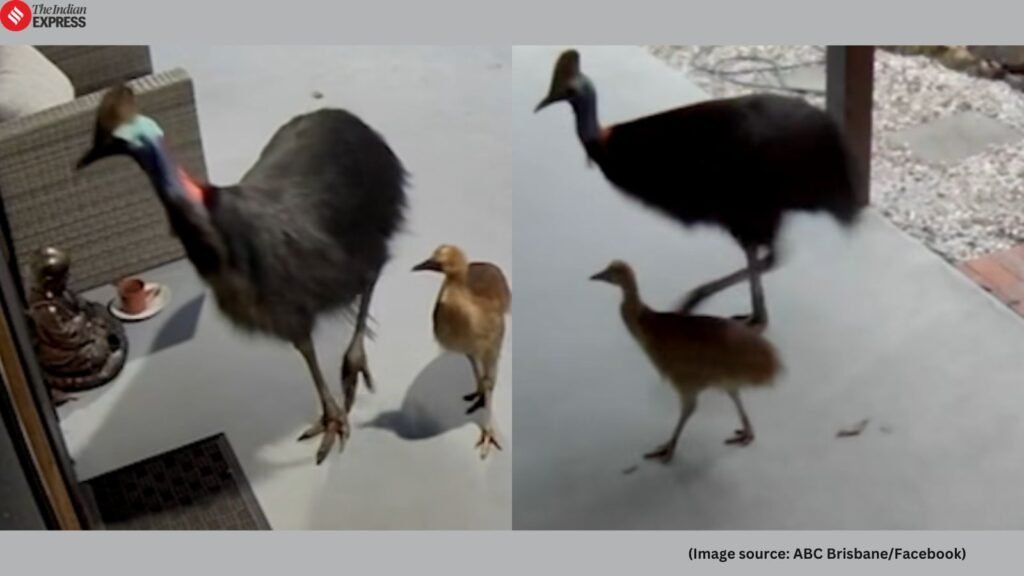A video of a harrowing encounter a mother and her child had with what is called the “world’s most dangerous bird”, in Australia, has caught the Internet’s attention. The incident unfolded on May 9 in Mission Beach, Queensland, and the CCTV footage shows the duo narrowly escaping an encounter with two cassowaries.
In the now-viral video, the mother and child are seen approaching the door of a residence when two cassowaries suddenly appear behind them. The child spots the large birds first and runs out of fear. His mother quickly notices the bird and holds the door open, pushing the boy inside just in time.
The cassowaries—one large adult and a smaller chick—follow closely but pause as the door shuts.
Watch the video here:
The Queensland Department of the Environment, Tourism, Science and Innovation released the surveillance video as a public warning, ABC Brisbane reported. According to Queensland authorities, the birds were “a habituated male cassowary and his chick” who had approached the home “in the hopes of being fed.”
According to World Wildlife Magazine, the last recorded cassowary-related death in Australia took place almost 100 years ago. However, it can cause severe injuries to humans.
Native to northeastern Australia, New Guinea, and nearby islands, these flightless birds typically stand between 4 and 5.6 feet in height, with females weighing up to 167 pounds, making the southern cassowary the world’s second-heaviest bird after ostriches. With powerful legs, cassowaries can take a leap of over five feet into the air, deliver forceful kicks, and sprint at speeds of up to 30 miles per hour, the WWM reported.
While the species is currently listed as “least concern” on the International Union for Conservation of Nature (IUCN) Red List, cassowary populations are declining in some areas due to ongoing threats such as hunting and habitat loss.
© IE Online Media Services Pvt Ltd



